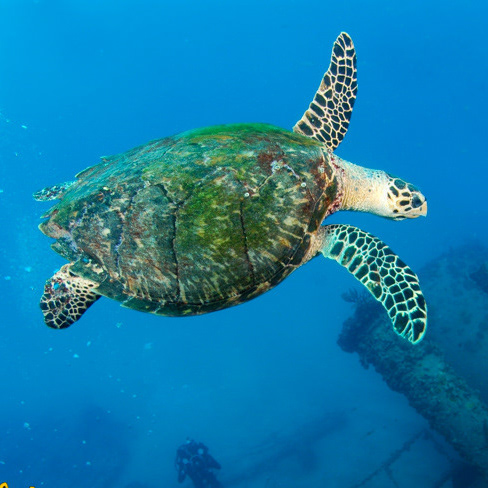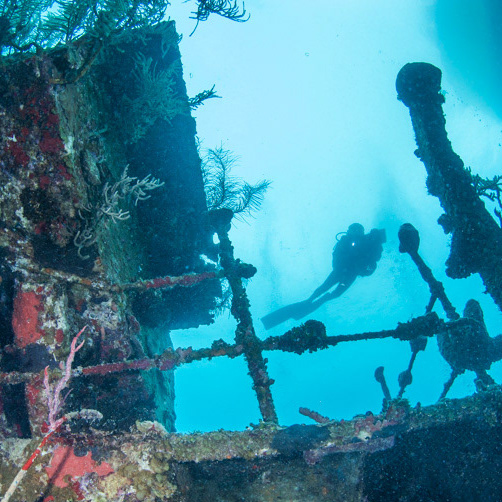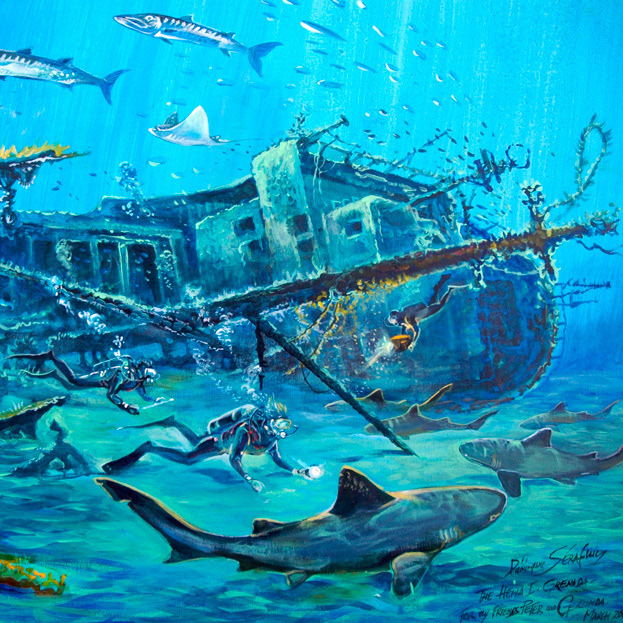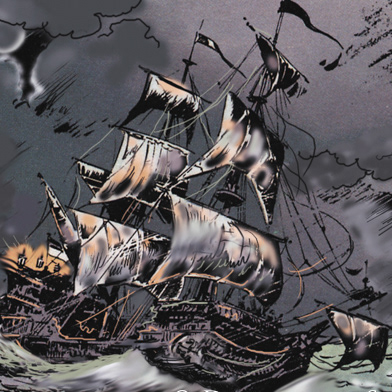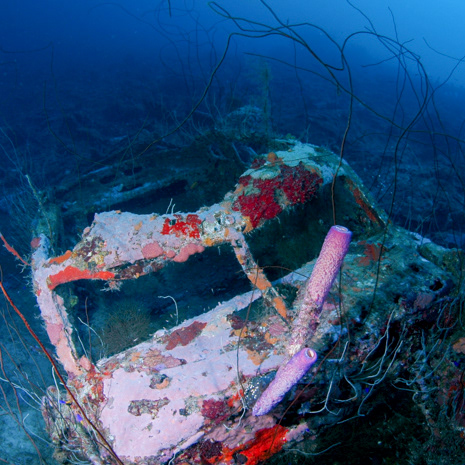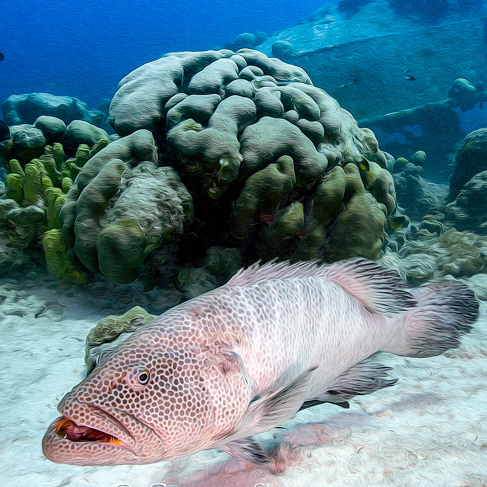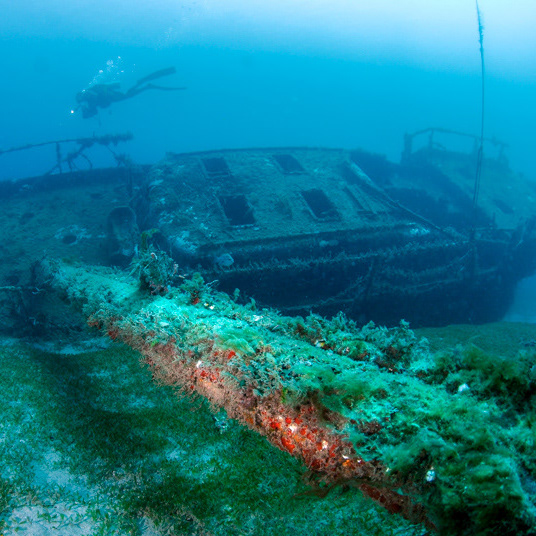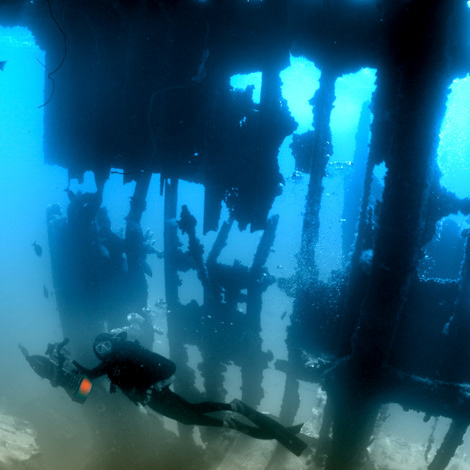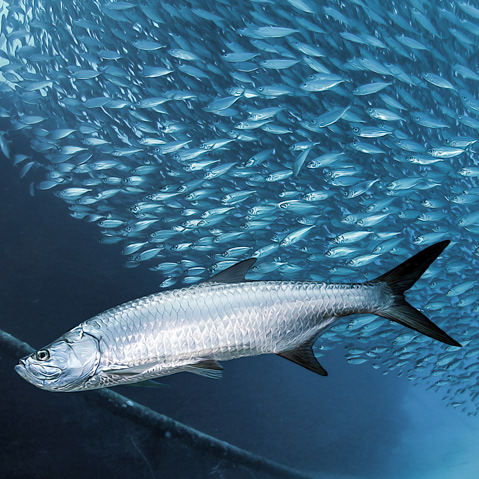King Mitch shipwreck, Grenada by Dominique Serafini
The Atlantic nautical crossing between Grenada and Trinidad in principle seems easy. It’s a short trip - only 100 miles. But in the channel between the islands, the currents and the wind can make the conditions difficult. It’s a region that can have rough seas, big swells and nasty short waves that smash against the hulls of ships making the passage. There are quite a few shipwrecks, not far from Grenada, that have become dramatic habitats for marine life. Though many have still not been discovered, there is one 4 miles offshore we know of - a notorious one called the King Mitch. This is a big wreck - 240 feet from bow to stern. Originally the King Mitch was a US Navy minesweeper that served in WWII. Once it was decommissioned, the ship was converted into a freighter with two cargo holds and a crane attached to the deck in its midsection. The ship finished its life hauling cement between Grenada and Trinidad. With a boxy stern and a pointy bow, it is definitely an unusual ship and looks nothing like a minesweeper and only marginally like a cargo vessel.
King Mitch shipwreck, Grenada by Cathy Salisbury
King Mitch lies on its port side in 110 feet of water. It sank in 1981 when the bilge pump failed. Luckily all the crew survived. There is some coral growth and gorgonians on the hull, but the growth is nowhere near as prolific as wrecks on the Caribbean side. What the King Mitch does have is lots of is nurse sharks. In the holds, sleeping sharks rest and lobsters hide amongst the cement that sank along with the ship. With a very slow approach, one can spend some quality time watching the nurse sharks.
Atlantic-side shipwrecks can only be visited in ideal conditions. The wrecks in general are in exposed locations and between the really strong currents underwater and the surface swells, the dive can be very technical. You need a good dive shop and Aquanauts Grenada, run by Peter Seupel, is one of the best in the Caribbean. Their boat is great and they have an experienced and well-trained team.
King Mitch shipwreck, Grenada by Cathy Salisbury
Following a GPS coordinate, Peter put a first diver in the water who with the use of a scooter, quickly goes down on the wreck and ties up a descent line. “Go down fighting the whole way,” said Peter. We quickly jumped off the boat with the hopes of grabbing the descent line and pulling ourselves down to the wreck and yes we did fight all the way down. Once on the wreck, we kept close to the hull of the King Mitch to shelter ourselves from the current and we explored the interiors which were a marine life treasure trove.
The pelagics around the wreck were also a fantastic show. To experience the action in the blue, we found a part of the wreck to hold on to and just watched. The King Mitch is a cleaning station for eagle rays and we found a group of 20 of them, effortlessly flying over the hull in the company of barracudas.
King Mitch shipwreck, Grenada by Dominique Serafini
The ship has been sliced in two and the current runs through the gap between the bow and stern. Eagle rays tend to congregate there, hovering and enjoying the gentle caress of the current.
After about fifteen minutes the show was over, and as soon as everyone had a hand on the descent line, we disconnected the line from the wreck, to float out into the open ocean. On a heavy current day, you can end up as much as a mile away from the wreck before your decompression is finished.
While waiting to be recovered by the dive boat, we relived the beauty of our dive on the King Mitch, an old minesweeper who finished its career transformed by the sea into an oasis of marine life.

